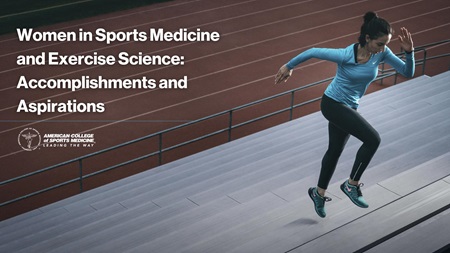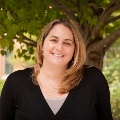Christie L. Ward-Ritacco, Ph.D., FACSM, ACSM-EP |
March
29, 2022
 As Women’s History Month draws to a close, it’s a fitting time to reflect on the accomplishments of women in our field and the gains we’ve made, as well as thank the mentors and leaders who blazed a path forward. The American College of Sports Medicine (ACSM) continues to lead in this regard, with accomplished women at the helm of the organization, including President-Elect Dr. Stacy Fischer, Immediate Past President Dr. NiCole Keith and CEO Kristin Belleson.
As Women’s History Month draws to a close, it’s a fitting time to reflect on the accomplishments of women in our field and the gains we’ve made, as well as thank the mentors and leaders who blazed a path forward. The American College of Sports Medicine (ACSM) continues to lead in this regard, with accomplished women at the helm of the organization, including President-Elect Dr. Stacy Fischer, Immediate Past President Dr. NiCole Keith and CEO Kristin Belleson.
As a result of initiatives like Title IX, female participation in active pursuits has grown steadily over the decades — 49% of 2022 summer Olympians were female — and with this growth has come an increased focus on identifying and acknowledging the unique needs and challenges female athletes may face. There have been substantial gains in the number of women engaged in scientific research careers and an increase in policies to enhance the engagement, recruitment and retention of women in clinical research. Likewise, more women are being included in in clinical trials, and there’s a growing appreciation for the differences between male and female athletes.
However, there is still an appreciable difference in the amount of sports medicine-related research focused solely on female athletes and health-related research across the lifespan. Costello and colleagues reported that there is a significant difference in the number of males and females included as participants in sports medicine research: 61% and 39%, respectively. We also know that from childhood to older adulthood, the number of females who meet recommended physical activity guidelines is lower than that of their male counterparts, and that girls are less likely to play sports than boys. As the physiological and psychological benefits of physical activity are irrefutable, it is vital that we address this disparity by promoting physical activity and exercise to female participants from childhood to older adulthood. Having a deeper understanding of how to best motivate, train, and treat women for musculoskeletal injuries, pain management, mental health, nutrition, sleep, and pelvic-floor dysfunction while also accounting for the effect of the menstrual cycle can only enhance the impact of research and application to health and wellness for women across the lifespan.
In closing: ACSM recently conducted a Job Task Analysis for each of our core health fitness certification programs, and over 60% of the participants identify as female, demonstrating the commitment and engagement of our stakeholders and the impressive impact ACSM certified professionals are having in their communities. We are making great progress, but there is still much work to be done.

Christie L. Ward-Ritacco, Ph.D., FACSM, ACSM-EP, is the chair of ACSM's Committee on Certification and Registry Boards and is an associate professor in the Department of Kinesiology at the University of Rhode Island.
Related Content:
Blog | International Women's Day 2022 | Honoring Drs. Rathbone, Drinkwater and Clarkson
Video | Community-Engaged Research on an Urban Exercise Prescription Program for Under-Resourced Women
Resource | Women and Heart Disease